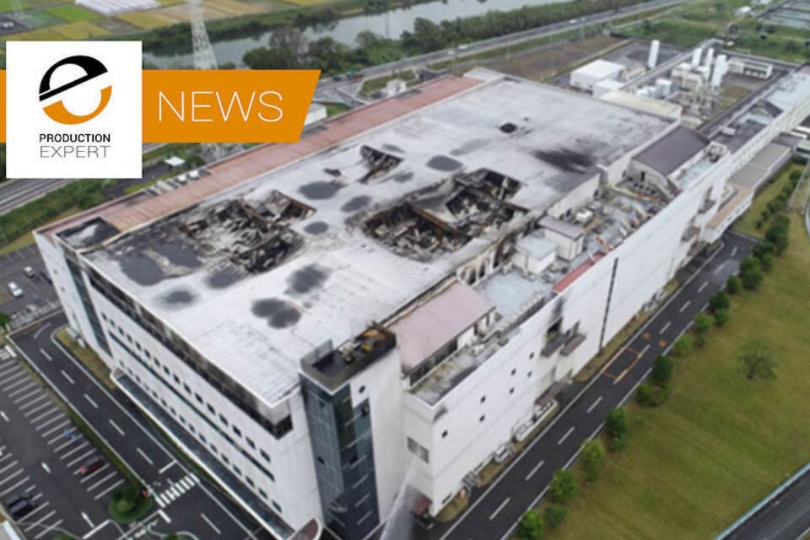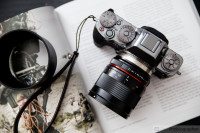
Introduction Canon and Nikon dominated the DSLR market for around two decades but the move to mirrorless saw Sony gain a significant foothold in the full-frame space before the former 'Big Two' weighed in.
The second-generation full-frame mirrorless cameras from both brands are hugely capable though, so in the absence of an update from Sony, the Canon EOS R6 and Nikon Z6 II are the midrange models to beat.
But which is right for you?
Ergonomics
An extra dial on the rear edge of the camera represent the R6's greatest divergence from Canon's DSLR ergonomics.
For many years, the biggest distinction between Canon and Nikon was their respective approaches to ergonomics: which one you found most comfortable was probably the best way to choose between them. And, to some extent, these distinctions are carried through in their latest mirrorless models.
The Z6 II hand grip will be familiar to Nikon DSLR users, as will the positioning and function of its command dials. These tend to be very ergonomic, with the dials well placed under the thumb and forefinger. It's a smaller camera but finds plenty of room for control points without feeling cluttered.
Canon, meanwhile, has diverged a little more from tradition. The R6's grip is still a lot like a larger Canon DSLR (less overtly hand-shaped but providing a solid, comfortable substrate to hold onto). The R6 gains a command dial on its shoulder, in addition to the vertical dial on the back plate and the dial behind the shutter button. We've found this latest iteration to be an improvement on a familiar setup, and appreciate the extra flexibility it gives.
Sensors
To a great extent, the biggest difference between the two cameras is in the sensors they use. The Nikon uses a 24MP BSI CMOS chip, shared with several rivals. In this instance it has an undisclosed number of pixels devoted to providing phase-detection autofocus.
The Canon uses a 20MP sensor using the older FSI CMOS technology but using Canon's 'Dual Pixel' design in which pairs of photodetectors are used at each pixel, meaning the entire sensor can be used for phase-detection autofocus, and without even the minuscule risk of glitches or artifacts that comes with dispersed phase detection layouts.
In image quality terms, there's not a lot to choose between them. The Nikon has fractionally higher resolution capture and slightly better dynamic range (less read noise, meaning there's more information in the very deep shadows before it's swamped by noise). However, the difference is small enough that the Canon's finer sharpening means its out-of-camera JPEGs end up looking similarly detailed than the Nikon's, despite the lower resolution.
Interface/menus
Both cameras use menu systems inherited pretty directly from their DSLR forebears. This is great in terms of familiarity, but both are beginning to creak somewhat with the sheer number of menu options crammed into them. Nikon's 'Setup' menu has some of the best navigation cues in the business, but other sections are just long lists of options with few hints about the logic used to order the options and insufficient indications to find your way back. Thankfully both cameras have My Menu tabs into which you can collect the options you change most often.
Both cameras offer a decent degree of customization, though not to the point where every button can be reprogrammed to access any possible function. The Nikon lets you customize its 'i' quick menu, with separate choices for stills and video, but it omits the useful option to assign a focus area mode (or area mode + AF-On) to a button, which the company's DSLRs offered. The Canon lets you do this, via the 'Switch to registered AF func' option, though there's less need to do so. The Canon's quick menu isn't customizable but you can add a series of functions to the list accessed with the 'M-Fn' button, for semi-fast access.
Autofocus
Canon (top) combines face/eye detection and tracking in a single, unified AF mode. Nikon (bottom) lets you access face/eye detect as an option in two AF area modes; AF Tracking is a separate mode, accessed with a custom button.
The autofocus systems of the Z6 II and R6 are likely to be seen as revelatory to most DSLR users, and will seem like a pretty big step forward to anyone whose camera is more than a few years old. In both instances, the subject tracking performance and face and eye detection is extremely impressive.
Where they differ is how simple it is to access these capabilities. On the Nikon you need to choose whether to engage subject tracking or to use face detection, and then decide whether to limit face detection to a zone within the scene, to let you pre-select which person you wish to focus on.
On the Canon, once you've changed the settings so that you get to choose the initial AF position, you can just point your focus point at a subject and it'll track it, using face and eye detection if it's a person or just using generic subject tracking if it's not. The whole process is easier to understand and quicker to operate.
Video
Video is one of the areas in which a distinction begins to appear, though again it's more nuanced than simply being a case of 'camera X is better. '
The Canon has the better-looking specification on paper: there's a slight crop to all its video but it'll shoot UHD 4K video in 24, 30 and 60p, whereas the Z6 II will apply a significant crop when 60p capture arrives in 2021. Using a cropped region makes it harder to find a lens that gives a wide-angle view, and gives the higher noise level of using a camera with a smaller sensor (APS-C in the case of the Z6 II's 60p mode).
The Canon can also shoot 10-bit footage internally, giving more flexible Log footage or HDR TV-ready video. The Nikon requires an external recorder to record 10-bit data, making it less flexible. That said, there's an extra-cost option to upgrade the Z6 II to output a 4K Raw video stream, which can be encoded as either ProRes RAW or Blackmagic Raw, but the footage is line-skipped, so it gains processing flexibility but loses some quality with regards resolution, moir
There's not a lot of difference in the appearance of the UHD 24, 25 and 30p footage both cameras can capture, other than the Nikon having less pronounced rolling shutter distortion of moving subjects. Neither camera is great in this regard but the Canon is visibly less good.
The latest firmware for the Canon has alleviated our original concerns about video overheating. We wouldn't necessarily choose it if you need to shoot large amounts of stills and video back-to-back in a can't-miss-a-moment setting, like a wedding, but for most video projects where stop/start recording is the norm, it's no longer significantly different to its peers (so long as you turn the camera completely off between clips). Both cameras will stop internal recording after 29minutes, 59 seconds, which limits their appeal for long-run capture anyway.
Video Autofocus
What's great to see is that both cameras behave very similarly in stills and video mode, but don't carry too many settings over from one mode to the other. Both cameras retain separate exposure settings for stills and video, and let you define different white balance, color mode and custom button settings for the two shooting styles, if you wish. This makes jumping from stills to video and back easier, since it avoids accidentally shooting a series of Log-gamma photos or video clips with 1/200th shutter speed.
Where the Nikon has a slight edge is that its AF interface behaves in exactly the same way in stills and video modes. This means you can set an AF tracking point in advance or try to trust face detection (with the risk that the camera will re-focus if your subject looks away). On the Canon, the only way to achieve AF tracking in video is to tap the rear screen, meaning you can't prepare for a subject's arrival in the frame and you risk shaking the camera as you select them. The performance once the cameras are subject tracking is pretty similar.
Screens/viewfinders
There's not much to choose between the cameras in terms of viewfinders. The Nikon has an edge on paper, but it's not a big enough difference for us to notice in real-world usage.
Both cameras use 3. 69M dot OLED viewfinders, but the Nikon's optics mean that it gives a slightly larger 0. 8x magnification from the panel, rather than the Canon's 0. 76x figure. However, while both cameras default to a high-resolution, 60 fps refresh rate, the Canon also offers a 120 fps high speed mode, which can be useful when you're trying to follow action.
The Nikon has the better rear screen, with a 3. 2" 2. 1M dot touchscreen (1024 x 680 pixels) rather than the Canon's 3. 0" 1. 62M dot panel (900 x 600 pixels). But we suspect the way the screen moves - up/down tilt for the Nikon, full-articulated for the Canon - will have more of an impact on your preference than the difference in the panels themselves.
Fans of a top-panel status LCD will prefer the Nikon, since the Canon doesn't have one.
Features
Both cameras have been packed with just about every feature their respective maker can think to offer. Both cameras offer intervalometer functions, for instance, though only the Nikon also includes a time-lapse feature that builds a high-res movie file. In return, the Canon includes a mode to shoot high dynamic range 10-bit HEIF files for use on HDR displays, which the Nikon doesn't.
Interestingly, neither includes a multi-shot high-res mode of the sort offered by a majority of other manufacturers. If you indulge in one of the types of photography that can benefit from such modes, you'll have to look to Panasonic.
Both cameras can charge or operate using power over a USB-C connection. The Canon is rated as offering between 10 and 24% greater battery life than the Nikon, though frankly the larger battery used in the Sony a7 range is a safer choice if this is a major concern for your shooting. Both the Canon and Nikon offer battery grips to extend shooting times as well as provide duplicate controls.
Adapters and legacy lenses
Both the Nikon and Canon are designed to attract photographers already entrenched in the companies' respective DSLR systems, so both are available with adapters to use existing lenses.
Nikon's FTZ adapter doesn't include a focus motor, which means it'll only autofocus with AF-I, AF-S or AF-P lenses that have their own focus motor. This still allows autofocus with around 90 Nikon lenses launched since 1992. The company says a further 270 lenses can be manually focused, before you even consider third-party lenses with built-in motors.
Canon, meanwhile, offers three EF-to-RF adapters: a simple pass-through tube like Nikon's design or more expensive variants with an additional settings control ring or built-in filter mount. Because the EF mount always used in-lens AF and aperture drive, there are fewer compatibility considerations when using existing Canon lenses.
Many users report good experiences with adapted lenses, but the sheer number of lens designs, motor types and the subtle differences between DSLR and mirrorless AF systems means there's always scope for variability in performance. While this compatibility is nice to have, we tend to find there are image quality, AF consistency and often size advantages to using lenses designed for the new mirrorless mounts.
Conclusion
Overall, there's something almost nostalgic about how well-matched the Canon and Nikon are. But, unlike the DSLRs of a decade ago, there's more of a price difference between them. The Canon EOS R6 retails at an MSRP of $2,499 whereas the Nikon Z6 II can be purchased new for $1,999 (body-only in both cases).
So the R6 is substantially more expensive, but for us, the 'it just works' nature of its autofocus, the 10-bit stills and video capture and (nearly) full-sensor 4K/60p video make the Canon a slightly more convincing and enjoyable all-rounder, hence it getting a Gold award to the Nikon's Silver. But the differences aren't huge: they're both extremely good cameras.
And whereas, ten years ago, I'd have said: 'buy the one that fits most comfortably in your hand. ' I'm again in a position where it's not really the cameras themselves you need to focus on most. The depth of any existing investment you have in DSLR lenses and the availability of new, native versions of the lenses you expect to use most often should be the more significant factor.
. dpreview.com2020-12-29 18:00














